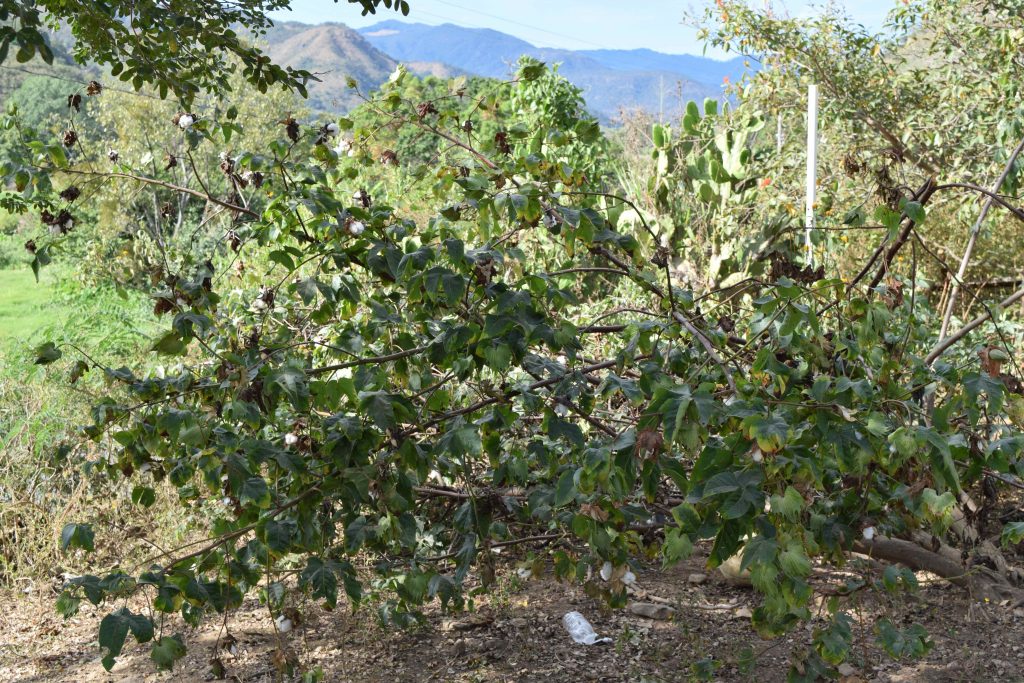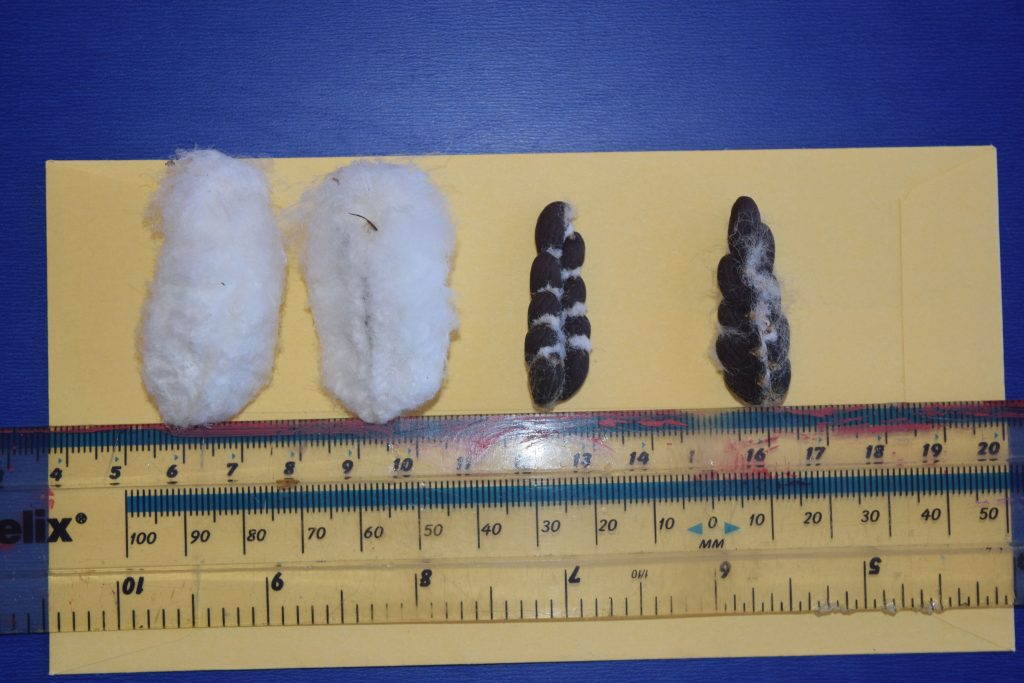In the Sierra de Manantlán Biosphere Reserve in the southern part of Jalisco, near Cuzalapa and in the Nahuatl pueblo Lagunillas de Ayotitlan, I found some interesting cotton plants.
The bolls were very compact and the seeds were not dispersed about in the cotton boll but were instead attached to one vaguely reminiscent of grains of wheat in a head of wheat (minus the central stalk).
I sent this photograph of the bolls and seeds to Dr. Mauricio Ulloa at the USDA-ARS, W.C.I.S. Research Unit, Cotton Enhancement Program. His reply was interesting. He indicated that this sort of seed arrangement goes under the common name of kidney cotton and is found most commonly in landraces of the cotton species Gossypium barbadense. The unusual seed arrangement results from fusion of the seeds of a locule (Ulloa et al. 2004).
G. barbadense is not native to Mexico but was instead apparently domesticated over 6000 years ago somewhere along the coast of Peru or Ecuador (Damp and Pearsall 1994). At some point in the past it made its way into Mexico. Ulloa et al. (2004) in a survey of currently existing cotton resources in western Mexico found G. barbadense plants in garden plots in Chiapas but no farther north.
Interestingly, all G. barbadense plants found in Mexico were of the subspecies brasiliense commonly known as “kidney cotton”.
Ullola et al. (2004) suggest the presence of G. barbadense in Chiapas is most likely the result of “early trade”. While this is a bit vague, the presence of this species only in southern-most Mexico and among indigenous groups suggests that by “early” the authors are suggesting that the trade was pre-Hispanic. If so, the finding of G. barbadense subspecies brasiliense in southern Jalisco has cultural significance in that it extends the range of this trading and broadens the number of indigenous groups involved. It is also further reason for the careful stewardship of the Sierra de Manantlán Biosphere Reserve and the respectful treatment of its people.
References
Damp, J. E.; Pearsall, D. M. (1994). Early cotton from coastal Ecuador. Economic Botany. 48 (2): 163–165.
Ulloa M, Stewart JM, Garcia EA, Godoy S, Gaytan A, et al. (2006). Cotton genetic resources in the Western states of Mexico: in situ conservation status and germplasm collection for ex situ preservation. Genet Resources and Crop Evolution 53: 653–668.



